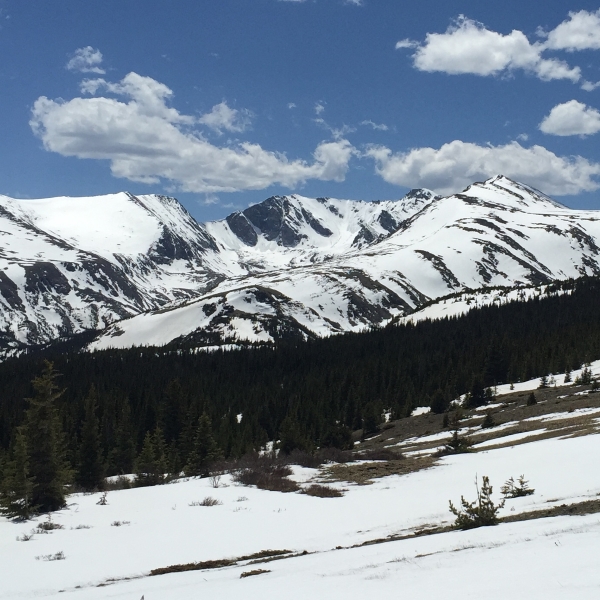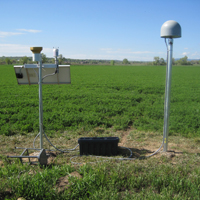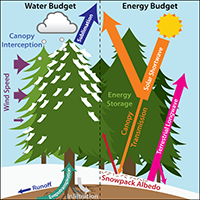Current Research

| Improving representation of snowpack density using advanced snow depth dataSnow water equivalent (SWE) is the amount of water in snowpack. SWE depends on the depth and the density of the snowpack at a given location. Lidar and other technologies can resolve fine scale variations in snow depth. Through field observations and model evaluations, we are refining understanding of snow density variations across landscapes. Our goal is to determine how to leverage snow depth data when modeling snowpack density and how model uncertainty can inform field-sampling strategies. More Info » |

| Development of GPS for monitoring the terrestrial water cycleGPS satellites transmit signals optimal for sensing water in the environment. We are developing a new method to estimate soil moisture, snow depth, and vegetation growth using GPS reflection data. Our goal is to use existing GPS networks to provide near-real time data for hydrology, climate, and ecology studies. More Info » |

| Estimating soil hydraulic properties using remotely-sensed dataSoil hydraulic properties (SHPs) control the partitioning of precipitation into runoff and evapotranspiration. We are investigating a modeling strategy to estimate SHPs on a continental-scale using remotely-sensed soil moisture and temperature. Our goal is to create a nation-wide map of SHPs, which will allow existing hydrologic land surface models to improve their simulations of weather, floods, droughts, and longer-term climate change. More Info » |
Recent Research

| The effects of weathering on bedrock channel erosion and formErosion of bedrock-floored channels is controlled by numerous factors, including channel geometry, sediment distribution, and rock properties. We are studying the effects of weathering on the erodability of rocks in stream channels, using coordinated field, laboratory and modeling efforts. More Info » |

| The Impact of Pine Beetle Infestation of Snow Accumulation and MeltThe mountain pine beetle is killing many trees in Colorado's high-elevation forests. Since 1996, Mountain Pine Beetles have killed over 4 million acres of lodgepole pine in Colorado. The thinned canopies found in dead tree stands intercept less snow and transmit more radiation than canopies in living forests, altering snow accumulation and melt processes. Additionally, falling pine needles alter snow surface albedo. More Info » |

